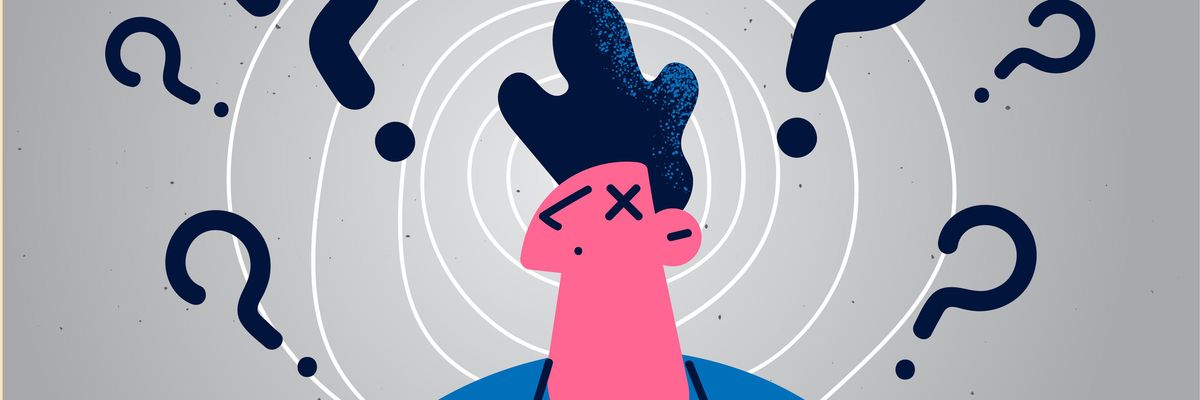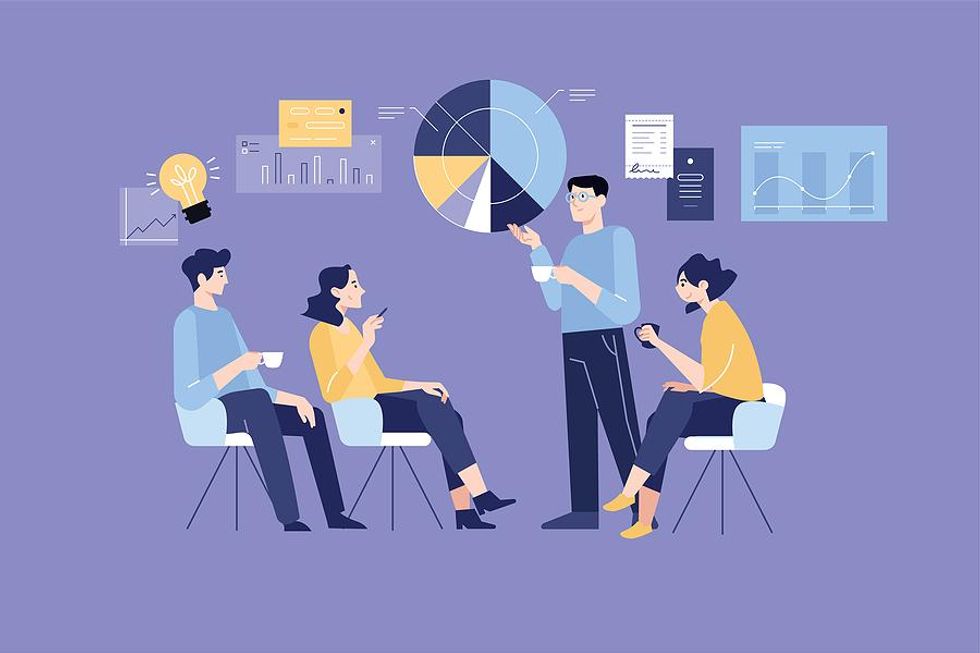How To Hire The Best Data Analytics Leaders (And It's Not The Way You Think!)

"Data analytics is to management decision-making what metaphysics is to spirituality. They both provide laws of thinking, procedures, methods, and treatments to shine a light on the truth. The truth generated from analytics should help executives and government officials steer clear of bad decisions and increase the value senior management brings to the firm or organization. More value is created when executives embrace these tools and resultant facts and data are leveraged to inform decisions and judgments." —Tony Branda, analytics expert. 1/17/2016.
Introduction

Bigstock
Most firms today use very dated behavioral interview techniques (1980s-style questions from before analytics and digital existed) to understand who might be the best leader to build, manage, or restructure their analytics functions. This article points out that extant techniques may lead senior executives to assess and hire the wrong analytics leader. This "how to" guide may become the best friend of the hiring manager as it will assist in creating a better hiring outcome.
Common Hiring Mistake #1

Bigstock
Focus your interview questions on hiring or firing ability and traditional strengths and weaknesses questions geared toward generalist managers. Forget to probe the main leadership competencies required in data analytics: the ability to motivate highly quantitative talent, the ability to drive a data analytics culture change, mastery of the multidisciplinary nature of analytics, and the ability to connect insights to strategy. Rejecting the idea that there are fractional CDAOs or gen one and gen two seems wise as many fundamentally believe and have seen that data analytics to work needs to be a linked and continually reinforcing loop of learning requiring some multidisciplinary experience. In some cases, employers are not ready for the CDAO role and don't have the maturity, change leadership, and transformation or readiness level to make the role a reality. It's not bad or good. It is what it is, and it's all perfect. Things evolve as organizations are ready.
What To Do About Common Hiring Mistake #1:
Work with firms such as CustomerIntelligence.net, Gartner, and Forrester or other data analytics experts to develop a more specialized battery of questions that will probe traditional leadership dimensions plus subject matter expertise and the ability to translate and communicate analytics insights into business strategy effectively. Consider requesting the data analytics leader's 360-feedback from their most recent positions (last two). The 360-feedback assessments administered while in the role are a better barometer than what any reference or behavioral interview question could ascertain. Many large firms have robust assessments that they have invested in, and many can be shared.
Common Hiring Mistake #2

Bigstock
Hire the data analytics leader based on only one criterion to help you in your role as a hiring manager. Very often, managers focus on big ahas or other flash-in-the-pan initiatives (only focus on social analytics, header bidding analytics, generational targeting, and generative AI, as examples) without looking at the broader skills the analytics or insights leader will need to demonstrate. The hiring manager could start by telling the data analytics professional their needs for the role, and the candidate can then relate their background to their needs. This is a much better needs-driven exchange than questions like, "So can you tell me about yourself?" If we believe that data analytics leaders solve business problems, is the role real only about technology configuration? We can teach and hire tech skills (fundamental) but do we have a leader that can set up data analytics governance and help us solve our business issues?
What To Do About Common Hiring Mistake #2:
The data analytics leader must be able to build an integrated strategic intelligence platform based on a business roadmap; this platform would include capabilities such as customer behavioral analytics, marketing research, other research skills, and the ability to interrelate competitive intelligence into their recommendations. The platform becomes the foundation that will enable analytics to generate big ahas and innovation on an ongoing basis rather than only occasionally.
Common Hiring Mistake #3

Bigstock
Assuming that business leaders with reporting or metrics backgrounds, particularly in sales/marketing, are indeed analytics or intelligence leaders. Analytics leaders typically have rotations in data analytics, Agile, data science, research, CRM, big data strategy, database, or digital marketing and represent multidisciplinary backgrounds.
What To Do About Common Hiring Mistake #3
Ensure the data analytics executive is well rounded. The analytics or insights executive is a crucial hire; their role is focused on solving questions and addressing challenges across various disciplines, very often at the highest levels of the organization. They need to know how to assess technology based on business owner problems and stakeholder buying.
Common Hiring Mistake #4

Bigstock
Hire leaders who have only done rotations in one business line. Not having broad-based business line exposure may hinder the leader's ability to understand the data or know the right questions to ask for various businesses. Only hire a leader with platform experience with no rotation in data governance or analytics. The CDAO role is a hybrid multidisciplinary role. It would be interesting for someone to go back and name people or titles that were some of the first CDO or CDAO roles. Is anyone up for this challenge? It would help us understand the evolution even further.
What To Do About Common Hiring Mistake #4:
Ensure the data analytics leader has rotations in all aspects of data analytics. In many roles today, the analytics leader is a C-level executive. Therefore, business knowledge, industry knowledge, and deep knowledge and experience in data analytics are essential. Some of the best analytics leaders have done rotations supporting the different product or customer types. They have come up the ranks by managing the various sub-components of analytics: insights, modeling, BI, data science, data strategy and governance, mar tech, execution, and more. This is an essential point: each team under the data analytics leader will think the CDAO practice or function is all about only what they do, often saying we have everything covered when they don't. The pain points are so much broader.
Cross-industry knowledge can be helpful as it can bring a different or outside perspective. However, it is essential not to underestimate the critical value of having a data analytics executive (or at the very least the team under them) who has mastery of your own industry's data if possible. There can be some crossovers if the role is acting, and the first CDAO will start the function with a plan to upskill or bring industry expertise in later.
Cross-over hires can be appropriate at more junior data analytics levels. This can be problematic at the most senior level, especially when data analytics is expected to drive strategy and regulations for data usage are complex. The regulatory environment of the past seven years has forever changed how data can be leveraged, mainly in financial services (cards, insurance, and banking) for customer targeting and risk management. Knowing the complexities of the data enables the analytics leader to abide by the regulations and mine what is permissible for opportunities to grow the business. So know that if you are keen on hiring from outside your industry, there is a cultural/fit risk. Also, one question to ask the candidates is about the speed or velocity at which projects and changes happen at the company they are at now versus your company. How a tech company gets things done may be very different from a book publisher or a bank, for example.
Common Hiring Mistake #5

Bigstock
Hiring the data analytics leader at the wrong level. Companies are often still developing what data analytics functions do and where they report. If the data analytics leader is put into the wrong reporting hierarchy, that can backfire both for the candidate and the firm. For example, data analytics often requires executive support as the function requires investments and, as a relatively new discipline, may require senior executive management sponsorship to remove barriers and increase adoption. In addition, the best data analytics leaders and functions should strive to provide an independent point of view on business or functional measurement and a source of truth. Since most data analytics executive roles are change leadership roles, the hiring manager must be the ultimate decision-maker in any hiring process. Also, be cautious to ensure that the folks on the hiring committee have no conflicts of interest or underlying agendas for the data analytics role. You may include other data and analytics experts but ensure that if the role will be asked to restructure an area, the folks doing the interviewing are not the folks impacted as an example of potential conflicts.
What To Do About Hiring Mistake #5:
Ensure the leader reports to the right C-level executive at the organization's top or within the line of business. For example, if the role is for a line of business, the ideal reporting structure is to have the analytics leader provide facts and data to help with decision-making for the head of the company. The perfect state is for data analytics to report at the highest levels of the organization, quite possibly as a trusted advisor to the CEO, COO, business president, or CMO to help executives make the best decisions based on all that data analytics has to offer. Generally, data analytics functions are about looking for opportunities and not only for cost savings. The investments executives make in analytics can be returned tenfold. Hence, we recommend that the data analytics leaders not report to functions that are only support or cost containment types of roles. Roles such as the CTO, chiefs of staff, or other chief administrative functions, which tend to be more support or shared services, only emphasize the cost or defensive aspects of the role and note the business uplift. Data analytics leaders and functions need to be where they can best inform strategy and drive growth and competitive advantage. (While we acknowledge that there are many different ways to organize, we suggest this as a barometer.)
More and more, I am seeing that the CDAO role is reporting to the CIO role, and people are asking me if I think that is a good thing. It will depend on the focus they have on the CDO/CDAO. If it is purely data, it will be a challenging ride for everyone, and we will explain why in subsequent posts. Also, one thing I can say about reporting to the CIO if the CIO is also the COO, as is the case in many organizations, is it can be helpful from an investment point of view. Still, it depends on the level of budgetary authority of the CIO and if they can genuinely champion the role throughout the business.
In closing, data analytics is an evolving field and is finally coming to its right within organizations; therefore, hiring a data analytics leader requires special care and attention and goes beyond general management behavioral interviewing in favor of a more robust integrated approach. It is vitally essential for the hiring manager to make sure that HR, recruiters, and all team members involved in the hiring decision understand the phenomenon discussed in this article. Data analytics leaders (truly a multidisciplinary role) should be assessed on leadership dimensions, subject matter experience, rotations, and industry contacts and knowledge. This article's point of view hopes to open up further debate on hiring the data analytics executive while maintaining that the traditional way for this newer, more technology and knowledge-driven field may no longer produce the best hiring outcome.
- How To Organize Data Governance For Business Impact - Work It ... ›
- Does Data Monetization Really Require A Process Discipline ... ›
- How To Get Management Feeling Safe With Data In The Cloud ... ›
- Top 5 Questions To Answer To Get Your Data Strategy Right - Work It Daily ›
- Top 5 Questions To Answer To Get Your Data Strategy Right - Work It Daily ›
- 5-Step Problem-Solving Technique For An Innovative Solution - Work It Daily ›

 Bigstock
Bigstock Bigstock
Bigstock Bigstock
Bigstock


